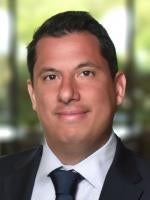On April 30, 2020 the Federal Reserve announced revised terms for its Main Street Lending Program (Main Street Program). Once operational, the program will provide up to $600 billion in liquidity to eligible lenders that make direct loans to eligible businesses. The revised terms include the addition of a third facility within the Main Street Program and expansion of eligibility requirements for both lenders and businesses. This advisory summarizes the key changes from the initial terms that were announced on April 9 and includes additional details per the revised terms. We will provide future advisories that focus on topics of interest for specific types of businesses and that summarize any changes and guidance the Federal Reserve may release. Linked below are copies of the Federal Reserve’s revised Term Sheets and initial set of Frequently Asked Questions.
According to the Federal Reserve, the Main Street Program will support small and midsized businesses that were in sound financial condition before the pandemic. Citing more than 2,200 letters from the public, the Federal Reserve decided to expand the loan options available to businesses under this program as compared to the initial terms. These changes include:
-
Adding a third facility or loan option with increased risk sharing by lenders for borrowers with greater leverage;
-
For new loans, lowering the minimum loan size from $1 million to $500,000;
-
For upsized tranches of existing loans, increasing both the minimum loan size from $1 million to $10 million and maximum loan size from $150 million to $200 million;
-
Expanding the pool of businesses eligible to borrow.
The Main Street Program is now comprised of three facilities: the Main Street New Loan Facility (MSNLF), the Main Street Priority Loan Facility (MSPLF) and the Main Street Expanded Loan Facility (MSELF). The MSPLF is new and allows for greater leverage by borrowers (six times 2019 adjusted EBITDA, compared to four times 2019 adjusted EBITDA under the MSNLF), in exchange for greater risk sharing by lenders (retention of a 15 percent share compared to a five percent share under the MSNLF and MSELF). Also, the loan underlying any MSELF upsized tranche may be a secured or unsecured term loan or revolving credit facility (and the upsized tranche of such loan will be a term loan, subject to the other program terms).
All three facilities use the same borrower and lender eligibility criteria, and they have many of the same features (including the same four-year maturity, interest rate, one-year deferral of principal and interest, as well as the ability of the borrower to prepay without penalty). Note that, due to complaints as to having to implement new systems to issue loans based on the secured overnight financing rate, the revised terms provide for an adjustable interest rate equal to London inter-bank offering rate plus three percent (the margin no longer has a range).
Loans may be eligible for the Main Street Program if originated after April 24, 2020. As per the initial terms, the Main Street Program’s total liquidity will not exceed $600 billion, and it utilizes seed capital from Treasury’s Exchange Stabilization Fund made available under Title IV of the Coronavirus Aid, Relief and Economic Security Act (CARES Act). As a result, borrowers must follow executive compensation, stock buyback and dividend restrictions that apply for the duration of the loan plus one year. However, the dividend restriction is relaxed to permit tax distributions to owners of pass-through businesses such as S corporations or LLC/partnerships. This program will cease participations on September 30, 2020 unless extended by Treasury and the Federal Reserve.
Additional details are as follows:
Eligibility
Eligible entities are certain businesses that have either 15,000 employees or fewer (the initial terms capped this at 10,000) or 2019 annual revenues of $5 billion or less (the initial terms capped this at $2.5 billion). Each such business must be a for-profit, legally-formed entity that was created or organized in the U.S. or under the laws of the U.S. prior to March 13, 2020 with "significant operations in and a majority of its employees based in the United States.” An additional requirement is that the business must not have participated in Treasury’s direct lending programs established under Section 4003(b)(1)-(3) of the CARES Act.
Certain businesses (including hedge funds and private equity firms by adoption of recent SBA guidance related to the Paycheck Protection Program) are ineligible to participate in this program even if they satisfy all other eligibility criteria. Moreover, nonprofit organizations are not currently eligible, although the Federal Reserve indicated that it is evaluating the feasibility of adjusting the borrower eligibility criteria and loan eligibility metrics for such organizations.
In determining how many employees a business employs, the Federal Reserve adopted the framework set out in the Small Business Association (SBA) regulations. That is, the business must count as employees all full-time, part-time, seasonal or otherwise employed persons (excluding volunteers and independent contractors). This includes employees obtained from a temporary employment agency or professional employer organization. The business must take the average total number of such persons employed for each pay period over the 12 months prior to the origination or upsizing of the loan pursuant to this program.
In determining 2019 annual revenues, a business may use revenue per its 2019 generally accepted accounting principles audited financial statements or receipts (as such term is used by the SBA) for fiscal year 2019 as reported on its federal tax return. In addition, a business must aggregate the employees and 2019 annual revenues of the business itself with those of its domestic and foreign affiliates, in accordance with the SBA’s affiliation rules.
The Federal Reserve also clarified that eligibility does not mean automatic qualification. The terms set out in the Federal Reserve’s Term Sheets are minimum requirements. Each participating lender must conduct an assessment of the applicant’s financial condition and creditworthiness at the time of application and apply its own underwriting standards. Ultimately, each lender must determine whether the applicant is approved for a loan under the Main Street Program. However, participating lenders are not expected to independently verify an applicant’s certifications or actively monitor ongoing compliance with required covenants.
Loan Amounts and Priority
Loans under the MSNLF and MSPLF are available at a minimum of $500,000 and up to $25 million. However, the maximum size of such a loan cannot, when added to the applicant’s existing outstanding and undrawn available debt, exceed (i) under the MSNLF, four times 2019 adjusted EBITDA and (ii) under the MSPLF, six times 2019 adjusted EBITDA. Although new loans would have been unsecured under the initial terms, these loans may be secured or unsecured as the lender may determine.
As for priority, MSNLF and MSPLF loans differ:
-
MSNLF loans must not be, at the time of origination or any time thereafter, contractually subordinated in terms of priority to any other loans or debt instruments. This means that MSNLF loans may not be junior in priority in bankruptcy to the borrower’s other unsecured loans or debt instruments. However, a MSNLF loan may be a secured loan (including in a second lien position) or an unsecured loan (regardless of the term or secured or unsecured status of its existing debt), and the borrower is not prevented from incurring new secured or unsecured debt after receiving a MSNLF loan so long as the new debt would not have higher contractual priority in bankruptcy than the MSNLF loan.
-
MSPLF loans, at the time of origination and all times thereafter, must be senior to or pari passu with, in terms of priority and security, all other loans or debt instruments other than mortgage debt.
Loans under the MSELF are available at a minimum of $10 million and up to $200 million. However, the maximum size of such a loan cannot exceed (i) 35 percent (the initial terms capped this at 30 percent) of the applicant’s existing outstanding and undrawn available debt that is pari passu in priority with the MSELF loan and equivalent in secured status (i.e., secured or unsecured) or (ii) when added to the applicant’s existing outstanding and undrawn available debt (i.e., regardless of priority and secured status of such debt), exceed six times 2019 adjusted EBITDA. At the time of upsizing and all times thereafter, the upsized tranche must be senior to or pari passu with, in terms of priority and security, all other loans or debt instruments other than mortgage debt. Also, if the underlying loan is part of a multilender facility, the lender originating the upsized tranche must be one of the lenders that holds an interest in the underlying loan at the date of upsizing (but other members of the multilender facility are not required to satisfy the lender eligibility criteria, which exclude all nonbanks among other lenders).
For MSNLF and MSPLF loans, the methodology used by the participating lender to calculate 2019 adjusted EBITDA must be the methodology previously used for adjusting EBITDA when extending credit to the applicant or to similarly situated borrowers on or before April 24, 2020. For MSELF loans, the methodology must be the methodology it previously used for adjusting EBITDA when originating or amending the underlying loan on or before April 24, 2020. This approach recognizes that market practices differ for businesses across industries and sizes.
The term “existing outstanding and undrawn available debt” includes all amounts borrowed under any loan facility, including unsecured or secured loans from any bank, nonbank financial institution or private lender, as well as any publicly issued bonds or private placement facilities. It also includes unused commitments with certain exclusions (e.g., any undrawn commitment that is no longer available due to change in circumstances such as borrowing bases is excluded). This calculation is made as of the date of the loan application. It does not appear that a borrower’s cash can be netted against its debt when determining leverage for purposes of the Main Street Program.
As per the initial terms, participating lenders may originate new loans under the Main Street Program (MSNLF and MSPLF) or use the Main Street Program to increase the size of existing loans to their eligible customers (MSELF). However, borrowers may only participate in one of the Main Street Program facilities and must not also participate in the Federal Reserve’s Primary Market Corporate Credit Facility (which is a separate lending program that supports large companies through the purchase of eligible corporate bonds from and lending through syndicated loans to such companies).
The Federal Reserve reiterated that small businesses that participate in the Paycheck Protection Program may additionally take advantage of the Main Street Program. These programs are not mutually exclusive for businesses that qualify under both.
Term, Amortization and Collateral
Loans still have a four-year term, but the revised terms provide for their amortization:
-
For MSNLF loans, one-third of principal is due at the end of each of years two and three, and one-third is due at maturity at the end of year four.
-
For MSPLF and MSELF loans, 15 percent of principal is due at the end of year two, 15 percent is due at the end of year three, and a balloon payment of 70 percent of principal is due at maturity at the end of year four.
As noted above, loans may be secured or unsecured as the lender may determine. Also, the Federal Reserve clarified that lenders can require new or additional collateral for upsizing existing loans under the MSELF.
Additional Requirements
Numerous additional requirements apply. As per the initial terms, the participating lender may not cancel or reduce any existing lines of credit to the borrower (provided the lender may do so in an event of default), and the borrower may not seek to cancel or reduce any of its outstanding lines of credit with any lender (including the participating lender). For clarity, this does not prohibit the reduction of availability under existing lines of credit in accordance with their terms (e.g., due to changes in borrowing bases).
With respect to any existing debt of the borrower:
-
Under the MSNLF and MSELF, the borrower may not repay principal or pay interest on debt until the Main Street Program loan is repaid in full, unless the principal or interest payment is mandatory and due.
-
Under the MSPLF, the borrower may not repay principal or pay interest on debt until the Main Street Program loan is repaid in full, unless the principal or interest payment is mandatory and due. However, the borrower may use proceeds of the MSPLF loan, at the time of origination, to refinance existing debt owed to a different lender (i.e., not the lender originating the MSPLF loan).
According to the Federal Reserve, these covenants will not prohibit: (i) repaying a line of credit (including a credit card) in accordance with the borrower’s normal course of business usage for such credit; (ii) incurring and paying additional debt obligations required for the normal course of business and on standard terms, provided that such debt is secured by newly-acquired property such as inventory or equipment and, apart from that security, is of equal or lower priority as that of the Main Street Program loan; or (iii) refinancing maturing debt.
Under the revised terms, the borrower is no longer required to attest that it requires financing due to the pandemic. Also, the workforce provision under the Main Street Program is limited to the borrower making commercially reasonable efforts to retain employees during the term of the loan. This means the borrower should undertake good faith efforts in this regard in light of its capacities, the economic environment, its available resources and the business need for labor. For clarity, a borrower that has already furloughed or laid off workers as a result of the pandemic is still eligible to apply to the Main Street Program.
We referenced certain CARES Act-imposed requirements, including executive compensation, stock buyback and dividend restrictions that apply for the duration of the loan plus one year (subject to the relaxing of the dividend restriction to permit tax distributions to owners of pass-through businesses such as S corporations or LLC/partnerships). In addition, pursuant to Section 4019 of the CARES Act, the borrower must certify that none of the U.S. president, the U.S. vice president, the head of an executive department or a member of Congress (or their spouse, child, daughter-in-law or son-in-law) has a “controlling interest” (defined as 20 percent or more of the voting power or value of any class of equity) in the borrower.
Finally, as previously noted, the Federal Reserve’s authority to provide emergency lending does not permit loans to failing or insolvent businesses, including any debtor in bankruptcy. The revised terms require the borrower to certify that it has a reasonable basis to believe that, as of the date of the Main Street Program loan and after giving effect to such loan, the borrower has the ability to meet its financial obligations for at least the next 90 days and does not expect to file for bankruptcy during that time period. Moreover, the revised terms added a loan classification requirement: if the borrower had other loans outstanding with the participating lender as of December 31, 2019, such loans must have had an internal risk rating equivalent to a “pass” (i.e., those that are not adversely rated) on that date.
Fees and Application Process; Disclosure
Participating lenders must pay a facility fee to the Main Street Program equal to 100 basis points of the principal amount of the MSNLF or MSPLF loan or 75 basis points of the principal amount of the upsized tranche under the MSELF and may choose to pass this fee on to their borrowers. In addition, participating lenders may charge an origination fee of up to 100 basis points of the principal amount of the MSNLF or MSPLF loan or up to 75 basis points of the principal amount of the upsized tranche under the MSELF. However, lenders have discretion over whether and when to charge the origination fee. In turn, the Main Street Program will pay each participating lender 25 basis points of the principal amount of its participation per annum for loan servicing.
Further details for obtaining, completing and/or submitting applications for loans under the Main Street Program have not been released. For clarity, the Main Street Program is not yet operational. In the meantime, eligible entities should contact their existing lenders to confirm whether they will participate as lenders and to request more information on the application process.
Finally, as previously described, the Federal Reserve will make publicly available certain information regarding the Main Street Program, including names and details of participants, as well as amounts borrowed and interest rate charged.






 />i
/>i

